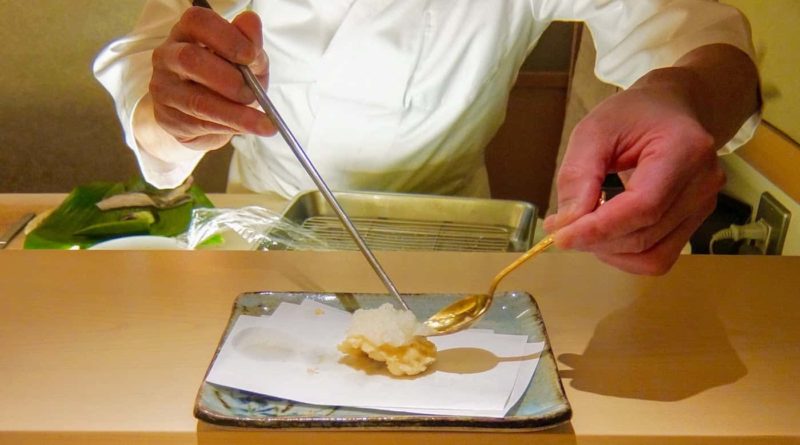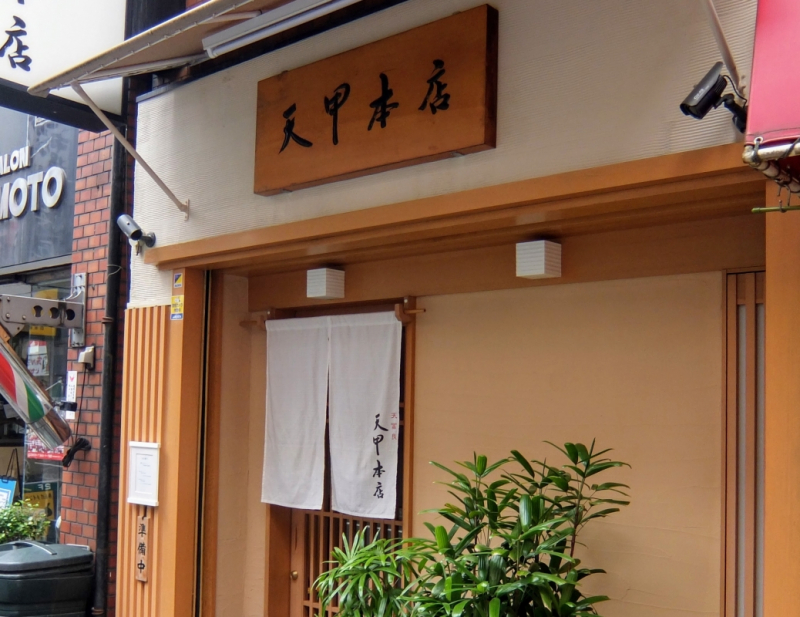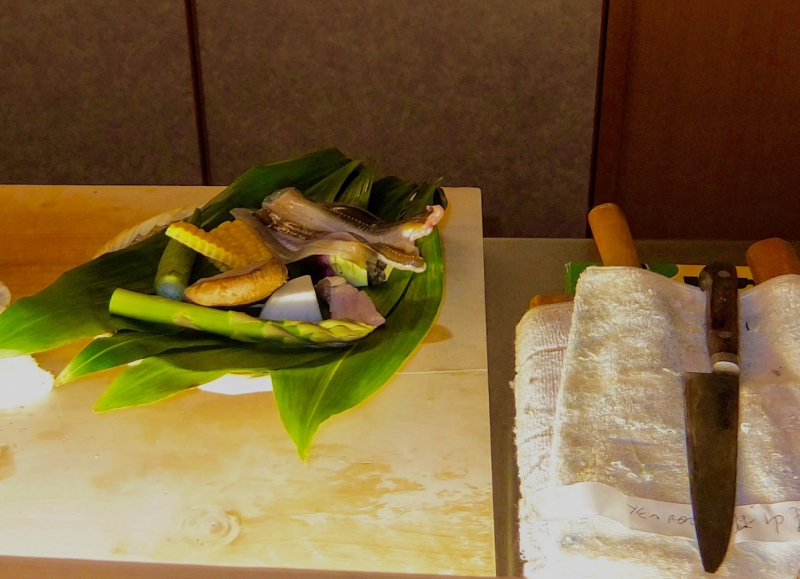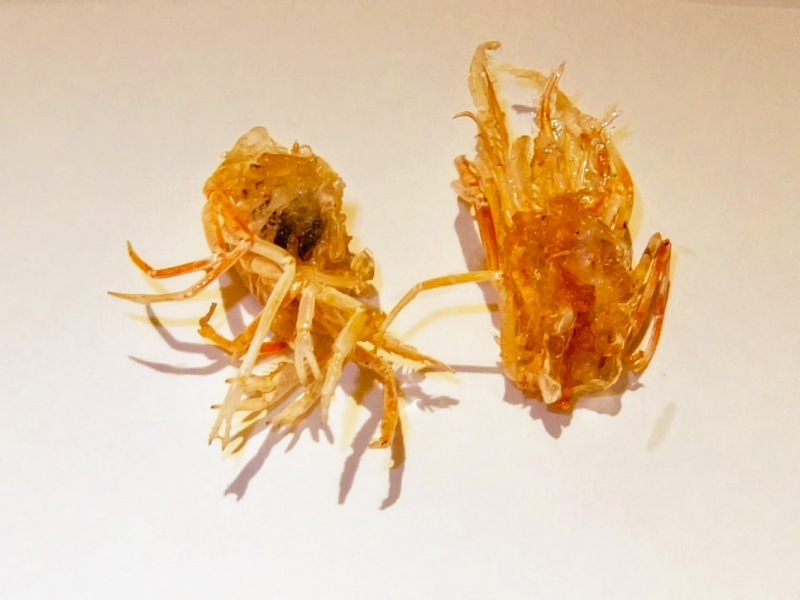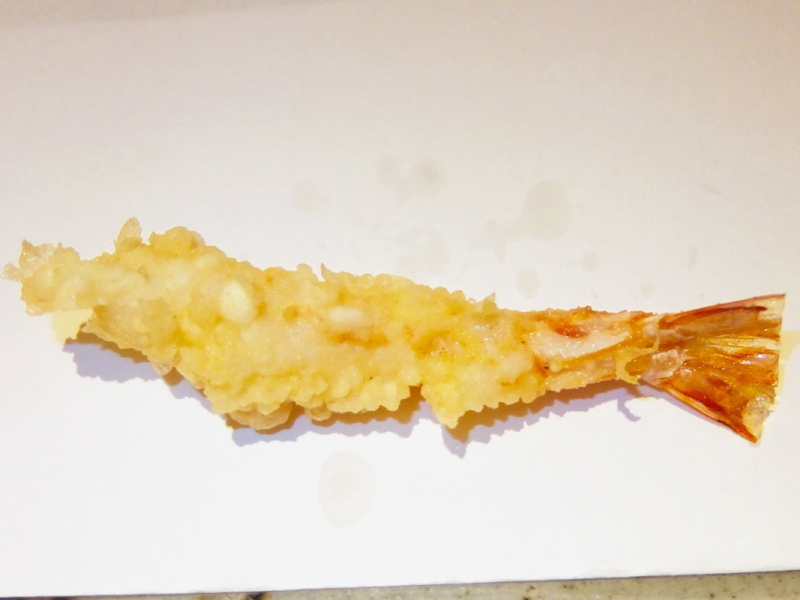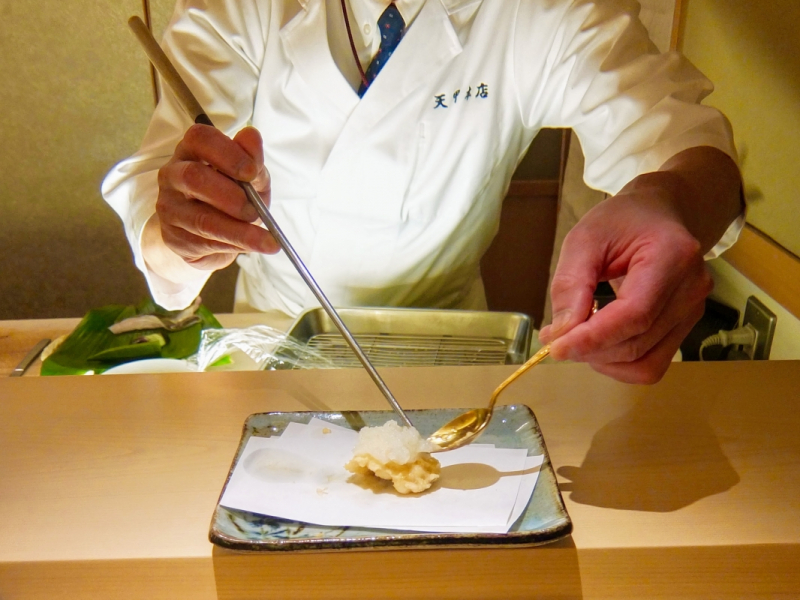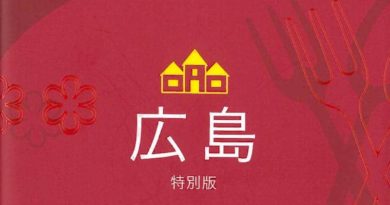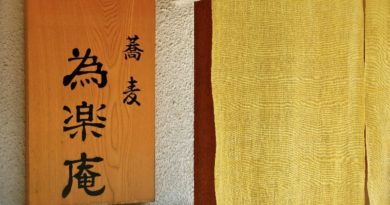Tempura Tenko Honten
Tempura is the most underrated of Japanese foods.
Sushi, ramen, and even yakitori receive most of the acclaim, while tempura is often perceived as greasy food for beginners and the finicky, confined to jumbo shrimp lunch sets at department store restaurants, best suited for such diners who are tired of udon. Expertly prepared tempura is harder to find than excellent sushi, but searching it out brings great rewards. Tokyo Ginza’s Tenichi is generally regarded as the best in the world, and Hiroshima’s Chef Higuchi, of Tenko Honten apprenticed there before opening the original Tenko in Fukuromachi thirty years ago. Higuchi opened Tenko Honten seven years ago, leaving the more casual (and twice as large) Tenko to his apprentice of quarter of a century, and making his new restaurant, Tenko Honten a more upscale experience.
Once you are seated, chef and his assistant get to work. One of them sets out fine ran leaves (used with sushi as an antibacterial) to display the different items during preparation, while the other fishes live shrimp and fish out of a tank, that will be prepared with sushi grade knives. Tiny eggplants are removed from beautiful wooden boxes and unwrapped from tissue, locally harvested vegetables sliced into perfect sizes.
As this is happening, the waitress ties a large paper apron around you before setting out the various condiments for your tempura course. There is pink salt, a slightly salty curry powder, lemon juice with sea salt, and the more commonly found ten-su, dipping sauce with grated daikon.
Unlike at many restaurants, where guests unaware of which utensils to use and what items get which sauce are left to watch their neighbors to figure out their meal, Chef Higuchi will tell you what items should be combined with which seasoning for the best taste.
Twenty seconds after the sound of the first bit of shrimp hitting the odorless oil, the real event begins, starting with the crispy shrimp legs in pink salt.
Two pieces of delicately battered tender shrimp will appear, wanting the lemon and then the salt.
Every few minutes a new delightful morsel will be set on your plate, fresh baby onions, mushrooms from the nearby mountains stuffed with local scallops, tiny ears of corn, dainty kisu fish, crunchy okra; each paired with the exact seasoning that will best enhance the flavor. If you have questions, Chef Higuchi will enthusiastically explain his choices, while using either metal chopsticks to serve or six centimeter thick ones to coat the next tidbit.
Later, Chef wove five tiny white shrimp into a basket-like shape, adjusted the batter, before the intricate delicacy was offered, to be savored for a moment, and then onto more Tenko specialities including Hiroshima’s renowned anago (sea eel), and hamo (pike conger) topped with ground daikon radish (pictured at the top of the page). Chef insisted that the hamo not have any other seasoning added to it, and encouraged that it be eaten in one large bite for best flavor and mouthfeel. After this I remarked to Mr. Higuchi how his guidance as well as various other elements (the ran leaves, the counter area prep work, his knives, and of course the live tank) gave Tenko a feeling akin to a preeminent sushi restaurant. He beamed at the recognition, and then he began to share much more of the ideas behind his menu. This analysis continued over the next course, which for me was o-chazuke rice topped with shrimp, egg, mitsu-ba tempura combination – the other offering being white rice, miso soup, and another light shrimp tempura.
The dessert course revolved around an excellent and expertly prepared matcha o-cha, of the quality you would be served during a formal tea ceremony. Paired with a small tea ceremony cake, each customer was served their own unique pottery bowl with the whisked olive drab colored drink. The zen-ness of the bitter drink and sweet cake, flavors absent until now, encouraged reflection over the meal.
Be one of the fortunate folks who will dine on Tenko Honten’s peerless viands on any given evening, rather than making a trek to Tokyo. I can’t wait to return, both for another meal, as well as to continue my culinary conversation with Chef Higuchi.
Rating*
![]()
![]()
![]()
![]()
Atmosphere
Clean, bright, huge hinoki wood counter, counter seating only. Not good for large boisterous groups. Mr. Higuchi made it clear that children under thirteen are very welcome at the original Tenko in Fukuromachi, but not at this branch. There are only eight counter seats. No smoking.
Sound
Quiet. Conversations punctuated by the sound of tempura boiling and staff explaining what the different items are.
Recommended dishes
Only set meals are available. The original Tenko also has a la carte tempura pieces.
Drinks and Wine
Precisely chosen white wines, as well as local sakes. Bottled beer. Brown tea is offered for non drinkers. Matcha green tea is served with dessert.
Language
There is an English menu, and Mr. Higuchi seems to be able to give the item names in English and explain what seasonings should be used. This said, a little Japanese will go a long way, everyone was extremely patient and gracious with my limited Japanese.
Price
Two courses are currently available in the evening, a ¥7000 and a ¥9000 version both served with an impressive sashimi course. Lunch offers a ten-don (rice bowl with tempura) or an excellent omakase lunch for ¥4200. Drinks are reasonably priced.
Open
Lunch is from 11:30 to 15:00 with the last order at 14:00. Dinner is served 17:30 to 23:00, with two seatings, the late one starting by 21:30. I was a lucky walk in at lunchtime; however for dinner, reservations are required. Closed Sundays, Golden Week, Obon in August, and for New Year holidays.
Accessibility
Street level, with two steps up, restroom is narrow.
Tenko Honten [天甲 本店]
4-2 Horikawacho, Naka-ku, Hiroshima
広島県 広島市中区 堀川町 4-2
082-249-8665


